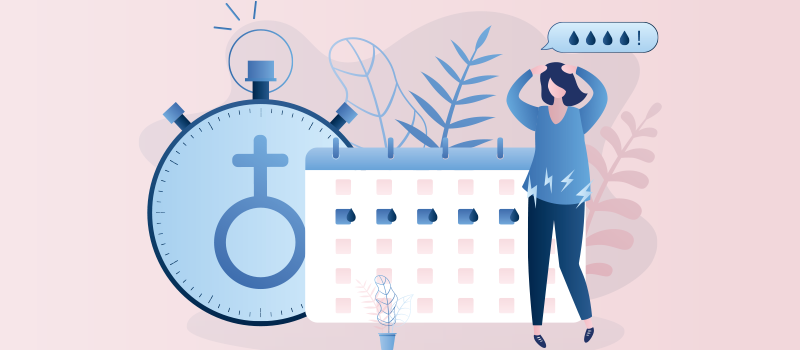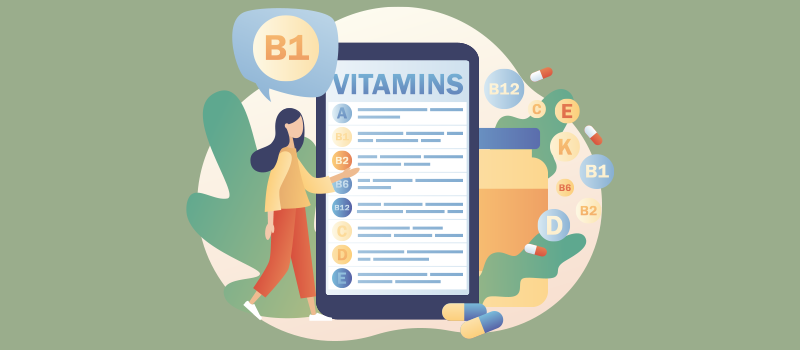What’s the Buzz
The Bee Healthy Blog
Pros and Cons of Different Birth Control Methods

Choosing a birth control method can be a difficult decision. Knowing your options along with the pros and cons of the different birth control methods can help you pick the contraception that's right for you. Please continue reading to learn more about the advantages and disadvantages of each birth control method.
What are the top 5 birth control methods?
Barrier Methods
This category of birth control options includes male condoms, female condoms, cervical caps, diaphragms, and contraceptive sponges.
Hormonal Methods
These birth control methods include oral birth control pills, skin patches (Xulane), vaginal rings (NuvaRing), and contraceptive injections (Depo-Provera). These birth control options are short-acting, meaning you need to use them on a daily, weekly, or monthly basis.
Other hormonal methods are long-acting, i.e., they last for several years until the device is removed. This group includes the copper intrauterine device (IUD) (ParaGard), the contraceptive implant (Nexplanon), and hormonal IUDs (Mirena, Kyleena, Skyla, and others).
Sterilization
This permanent birth control method includes vasectomy in men and tubal ligation (“getting your tubes tied”) in women.
Natural Family Planning
This birth control option requires a woman to be aware of her fertile period when ovulation occurs. These are the days of the month when she can get pregnant. Birth control is accomplished by avoiding sex around those days or using a barrier method. A woman’s fertile days can be identified by measuring basal body temperature or examining the cervical mucus. This is not a foolproof method, and the risk of pregnancy is high.
Another natural method is withdrawal or pulling out. This involves the male partner pulling out at the right time during penis-in-vagina sex before sperm can enter the vagina. However, if the partner does not withdraw in time or some of the sperm-containing ejaculate enters the vagina, it can lead to a pregnancy.
Emergency Contraception
This is a type of birth control also called the morning-after pill, which is used to prevent pregnancy after unprotected sex. Examples include Plan B One-Step, Ella, Aftera, and others.
What are the pros and cons of different birth control options?
Barrier Methods - Male Condoms
| Advantages | Disadvantages |
| Highly effective in protecting against sexually transmitted infections. | May interrupt foreplay or sexual intercourse. |
| Do not affect future fertility in either men or women. | Must be used every time you have sex. |
| Needs to only be used during sexual intercourse. | May decrease sensations during sex. |
| Safe for use when a woman is breastfeeding. | May break or leak. |
| Less expensive than many other birth control options. | Some people are allergic to latex/rubber (polyurethane/plastic condoms are available for such individuals). |
| Widely available without a prescription. | |
| Can help prevent premature ejaculation in men (having an orgasm too quickly). |
Hormonal Methods - Birth Control Pills, Skin Patches, Vaginal Rings, Implants, Shots
| Advantages | Disadvantages |
| The shot and implant are highly effective birth control methods. | Do not protect against sexually transmitted infections. |
| Shots and implants provide long-term contraception (several months to years). | Birth control pills must be taken around the same time every day to be effective in preventing pregnancy. |
| No interruption of foreplay or sexual intercourse. | Progestin-only pills are less effective than combination pills (estrogen and progestin). However, the shot and implant are very effective. |
| Lighter periods. | The implant must be placed by a trained health professional. |
Reduced cramping with periods.
| May cause irregular periods or spotting between periods. |
| May reduce acne. | May cause breast tenderness. |
| Reduce several health risks such as the risk of pelvic inflammatory disease, fibrocystic breast changes, ectopic pregnancy, and ovarian cysts. | Interactions with other medications can affect effectiveness. |
| May protect against certain cancers (ovarian and endometrial) | May delay return of normal menstrual cycle. |
| The shot can protect against sickle cell crises in women with sickle cell disease and reduce seizure frequency in women with seizure disorders. | Some hormonal methods can cause weight gain. |
| Progestin-only pills can be taken by women who can’t take estrogen due to a high risk of blood clots, such as women over 35 who are smokers. | Patches can be made less effective by exposure to heat or direct sunlight. |
| Rapid return of fertility after implant removal. | Patches contain the same hormones as birth control pills but a higher amount of estrogen than some low-dose birth control pills. This can increase the risk of dangerous blood clots. |
| Can be used after an abortion. |
Intrauterine Device
| Advantages | Disadvantages |
|---|---|
| Does not interrupt foreplay or sexual intercourse. | Does not protect against sexually transmitted infections. |
| Female- controlled and does not require the cooperation of a sex partner. | Only a health professional can insert and remove an IUD.
|
| Highly effective in preventing pregnancy. | |
| Cost-effective method of birth control over time. While an IUD can cost several hundred dollars, it is covered by most health insurance and costs less than other birth control methods if used for a long time. | |
| Fertility returns with the first menstrual cycle after IUD removal. | |
| Can be inserted after a normal vaginal delivery, cesarean section, or first-trimester abortion. | |
| Hormonal IUDs can relieve heavy menstrual bleeding and cramping. | |
| May delay return of normal menstrual cycle. | |
| Some hormonal methods can cause weight gain. | |
| Patches can be made less effective by exposure to heat or direct sunlight. | |
| Patches contain the same hormones as birth control pills but a higher amount of estrogen than some low-dose birth control pills. This can increase the risk of dangerous blood clots. |
Sterilization
| Advantages | Disadvantages |
| Highly effective in preventing pregnancy. | Reversal of the procedures is possible but can be complicated and expensive.
|
| Permanent contraceptive solution. |
|
Which birth control method has the least side effects?
The only birth control method with zero side effects that costs nothing and is 100% effective in protecting against pregnancy and sexually transmitted diseases is abstinence from sexual intercourse. This means not having penetrative sex or indulging in any sexual activity in which sperm can enter the vagina. A male condom is a good option if you are worried about side effects. You get protection from pregnancy as well as sexually-transmitted infections like HIV, chlamydia, gonorrhea, and herpes simplex virus (HSV) with no side effects.
What is the healthiest birth control option?
No birth control method is perfect, and there is no universal option for everyone.
You should think about whether you can use a method of contraception correctly and consistently over time. Some birth control methods like IUDs, implants, and sterilization are long-term solutions that do not require a daily effort on your part and are highly effective in preventing pregnancy. Other birth control options require more effort, such as monitoring your fertile days or taking a birth control pill every day.
The other important thing to consider is whether the birth control method is reversible. If your goal is to prevent pregnancy at present, but you are considering a pregnancy in the near future, you might want to choose a birth control method that is easily stopped with a quick return of fertility, such as a barrier method or short-acting hormonal method. If you wish to prevent pregnancy for a longer time, a method like an intrauterine device is worth considering. If you do not plan to have children in the future, sterilization is a permanent method. Therefore, different birth control options may be suitable for you at different stages of your life.
References:











SOCIAL